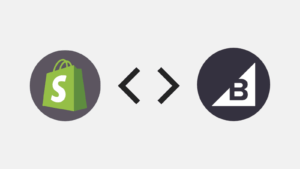The Fork in the Global Supply Chain
The global ecommerce stack used to have a single front, built in the era of offshoring. One storefront, one warehouse system, one supply chain optimized for cost, not flexibility. That era is over.
Now, mid-market and enterprise brands find themselves caught between two tectonic forces. On one side, reshoring, the drive to manufacture, fulfill, and deliver domestically to shorten lead times and control quality. On the other, China‑Plus‑One—the hedge, the expansion play, the necessity of not relying on one geopolitical partner to serve an entire global customer base, and the move to diversify operations across other countries in Southeast Asia, Latin America, or Eastern Europe.
But while your sourcing may split by geography, your buyer’s experience can’t fracture. You’re still expected to deliver a seamless storefront. One that can sell to a contractor in Cleveland, a procurement officer in Jakarta, and a distributor in São Paulo, without loading delays, pricing confusion, or compliance failures. And you’re supposed to do that without spinning up three separate platforms, hiring three dev teams, or triple-maintaining catalogs.
This is where the real pain begins for C-levels and ecommerce leads. Because what used to be a supply chain problem has become a platform problem.
You’re stuck trying to stitch together UX across fragmented frontends, mismatched tax logic, and a backend that was never designed for dual-market operation.
And when you ask your team to “just make it work,” they duct tape another workaround, until something snaps.
“When your supply chain splits, your ecommerce system has to stretch, not snap.”
The future of diversified sourcing depends on a platform that can carry two markets in one motion. Not as duplicate sites or cloned stores, but as a coordinated, adaptive ecommerce environment.
That’s what this article is about: how to architect a system that helps balance global complexity with operational control, without burning your ops team or breaking buyer trust.
Why Your Platform Might Already Be Holding You Back
You probably didn’t start out with a global ecommerce blueprint. Like most mid-market brands, you scaled production, sourcing, and storefronts reactively, and your platform has been playing catch-up ever since. But now that your supply chain has matured, those platform gaps are getting harder to ignore.
Shopify Plus: Fast, but Fragile
Shopify excels at speed and simplicity. That’s what makes it such a dominant platform for DTC brands and U.S.-centric ecommerce. But once you introduce multiple regions, catalogs, currencies, or compliance layers, Shopify’s limitations start to surface, fast.
There’s no native multi-store capability. If you want to sell in the U.S. and also serve export markets with different pricing or tax rules, you’re stuck spinning up duplicate Shopify stores. That means duplicated products, duplicated content, duplicated apps, and the operations overhead grows exponentially.
Worse, Shopify’s localization logic is fragile. Multi-currency support isn’t robust enough for serious B2B or region-specific pricing. Tax compliance is spotty once you leave North America. And syncing inventory or order data across stores? You’ll need a third-party app or custom middleware, and even then, it’s a game of cat and mouse.
BigCommerce: More Flexible, But Clunky
BigCommerce gets a lot right, especially for industrial B2B brands. It offers native multi-storefront support, which means you can run different sites from a shared backend. Catalog management is cleaner, pricing rules are more configurable, and their tax engine plays nicer with international needs.
But BigCommerce’s Achilles heel is its frontend. The native themes are inflexible, and extending UX beyond their standard templates often leads to brittle workarounds. If you need a fast, dynamic, mobile-first experience tailored to international buyer expectations, you’ll likely need to go headless, which adds complexity if your team isn’t already composable-native.
Magento: Power at a Price
Magento (Adobe Commerce) offers the most flexibility of the three, but at a steep cost. Yes, it can handle complex catalogs, multiple storefronts, custom tax logic, and almost any integration. However, development is slow, updates are fragile, and the total cost of ownership is high. For teams trying to stay agile while splitting markets, Magento often turns into an anchor, especially post-COVID, when speed and flexibility are everything.
You didn’t choose to fracture your supply chain, the market forced your hand. Rising labor costs, shipping volatility, and regional compliance complexity are driving the shift. But if your ecommerce platform can’t keep up with how your business is evolving, then it’s not a platform, it’s a bottleneck.
That’s why it’s time to look beyond single-stack ecommerce and start thinking like an operator:
How can we architect something that flexes with our markets instead of fighting them?
That’s where headless comes in.
Headless Is a Response to Market Complexity
There was a time when “headless commerce” sounded like a luxury, something reserved for tech-first disruptors or Fortune 500 brands chasing speed. But today, headless isn’t a trend. It’s a necessary architectural response to the complexity of serving multiple markets through one platform without compromising UX or backend control.
So what does “headless” actually mean in this context?
At its core, headless commerce decouples the frontend presentation layer from the backend commerce logic. That means your product catalog, pricing rules, checkout, and ERP logic live independently from how the site looks or behaves. Your frontend, whether it’s a Progressive Web App (PWA), native app, or static site, talks to the backend via APIs. And because it’s decoupled, you can build it to respond differently based on the buyer’s region, role, or intent.
This is what traditional platforms can’t do without breaking.
They assume a one-size-fits-all experience. But if you’re running a China‑Plus‑One strategy or reshoring to serve U.S. customers faster, Your ecommerce stack needs to treat each buyer not just as a user, but as a product of their region’s rules, and a gateway to market access in that geography.
Headless Enables Region-Specific Logic Without Catalog Duplication
Let’s say you’re a U.S.-based industrial supplier. You sell replacement parts to domestic buyers with net 30 terms and quote-based workflows. But you also export to Southeast Asia through a network of distributors that need real-time pricing, translated specs, and payment gateways that respect local banking systems.
With a traditional stack, you’d need to duplicate your store or force both buyer types through the same UX.
With headless, you can:
- Route U.S. and export buyers to different frontend experiences with shared backend logic
- Localize pricing, product metadata, and checkout flows based on geo-IP, browser language, or login credentials
- Plug in region-specific tax APIs, shipping rules, and payment providers—without changing your catalog architecture
All without breaking SEO, duplicating data, or creating a QA nightmare.
Market Complexity Is a Frontend Problem
When people think of “international ecommerce,” they imagine currencies and shipping zones. But the real complexity lives in the frontend. It’s not enough to show a price in euros or pesos, you need to adapt trust signals, loading behavior, field formats, compliance notices, and quote logic to match how that region does business.
Headless lets you do that with surgical precision.
“Locales aren’t just languages. They’re entire behavioral ecosystems—and your storefront needs to speak fluently in all of them.”
If you’re serving two or more markets with distinct expectations, headless is no longer optional.
It’s the only architecture that lets your brand flex with complexity, without collapsing under it.
Next, we’ll compare your actual platform options, BigCommerce, Shopify, and PWA headless build, and how they hold up in a real dual-market scenario.
BigCommerce vs. Shopify vs. PWA: Choosing a Stack That Enables Supply Chain Resilience
When your business spans reshoring and China‑Plus‑One sourcing, you’re not just managing logistics, you’re managing expectations. The expectations that your digital infrastructure can carry two radically different buying experiences in one seamless, scalable system. That’s the promise headless makes, but not every platform delivers it equally.
Let’s break down what BigCommerce, Shopify Plus, and a custom PWA stack offer when it comes to multi-region, dual-catalog operations.
BigCommerce: A Middle Ground with Multi-Store Bones
BigCommerce positions itself as the B2B-friendly cousin in the SaaS platform family. It shines in catalog flexibility, price list logic, and integration depth. But its biggest advantage for dual-market commerce is native multi-storefront support.
With BigCommerce, you can:
- Run multiple frontends (e.g. U.S. site, APAC site) on one backend
- Assign different pricing, content, and tax rules per storefront
- Manage inventory and order data centrally without duplication
This means you can serve a U.S. buyer and an export distributor through different storefronts, but still maintain a single source of truth for SKUs, availability, and fulfillment logic. That alone eliminates a huge chunk of operational overhead.
However, BigCommerce’s native frontend can be limiting. To implement modern UX patterns or deliver personalized experiences based on region or buyer role, you’ll likely need to go headless in BigCommerce. This unlocks the flexibility to build custom storefronts, but it does come with added development effort. That said, if you have the right team or partner, BigCommerce’s backend architecture is built to handle complexity. It supports split catalogs, regional pricing, and regulatory variations without getting in your way.
Shopify Plus: Lightning Speed, Until You Hit a Wall
Shopify’s magic is in the velocity. It’s fast to deploy, easy to manage, and adored by teams who need marketing control without dev dependence. But when it comes to multi-region logic, split compliance, or B2B workflows, Shopify shows its seams.
There’s no built-in multi-storefront management. If you want to serve U.S. and China differently, you’ll need to spin up separate Shopify stores, each with its own product data, theme, apps, tax rules, and workflows.
That’s fine if you’re running a consumer brand with two flavors of the same store. But for B2B or hybrid companies managing quotes, roles, fulfillment tiers, and payment terms? It becomes a mess.
Shopify’s localization logic is getting better, but “better” is still fragile. Currency formatting, tax compliance, and buyer logic often require third-party apps or custom scripts. And syncing data between storefronts is not a native experience.
If you need speed and aesthetics more than backend depth, Shopify can work. But if you need a single system of record across regions with dynamic business rules, Shopify will likely require heavy customization—or force you to settle for less.
Headless PWA: Built to Flex, But You Own the Complexity
A progressive web app (PWA) built on top of a headless backend (like BigCommerce, Shopify Hydrogen, or a custom stack) is the cleanest way to deliver differentiated experiences at scale.
With a PWA architecture, you can:
- Serve different UIs per region, channel, or buyer type, from a single codebase
- Surface dynamic content, pricing, and workflows based on user behavior or location
- Load lightning-fast across devices, even in low-bandwidth environments
- Optimize performance without fighting legacy theme structures
You’re not bound by the constraints of any SaaS theme. You design your UX to mirror the markets you serve. Whether it’s a U.S. buyer expecting net terms or a Southeast Asian buyer navigating government-import workflows, your frontend adapts.
But here’s the tradeoff: headless PWA builds require a real dev team. Not a drag-and-drop editor. Not a theme tweak. This is a composable architecture with frontend frameworks (like Next.js or Nuxt), API orchestration, and staging pipelines. The payoff is freedom. The cost is governance.
That’s why we often recommend pairing a PWA frontend with a BigCommerce backend. You get the catalog and operations logic to handle split-market complexity, and the frontend flexibility to deliver radically different experiences under one brand system.
The right stack depends on how fast you’re growing and how far your supply chain is pulling you. If you’re just getting started with export markets, Shopify might hold up for another year. If you’re running serious B2B and global ops, BigCommerce gives you operational control. And if you’re already managing multiple regions and roles, a PWA gives you the UX muscle to match your strategic depth.
Now that we’ve broken down the options, let’s go deeper into what dual-market ecommerce really demands, and how to structure your pricing, compliance, and catalogs to serve them without duplicating yourself.
Dual-Market Architecture: Locale-Aware Pricing, Tax, and Compliance Without Cloning Your Catalog
For global ecommerce operators, the real nightmare is duplication. Duplicated SKUs, duplicated content, duplicated stores. Each layer of redundancy adds friction: more places to update, more room for error, and more bloat your team has to QA every release cycle. The moment your architecture requires “cloning” just to serve a new market, you’ve already lost agility.
And nowhere is this more painful than in the areas of pricing, tax, and compliance.
So, how do you serve both a reshored U.S. buyer and an APAC distributor, without breaking your catalog into pieces?
The answer lies in building a locale-aware logic layer that respects market specificity without forcing data duplication. This is where modern headless architecture shines.
One Catalog, Multiple Realities
The trap many teams fall into is thinking that serving multiple markets requires multiple catalogs. But most of the time, your products are structurally the same, it’s the context that changes:
- Prices vary based on regional margins, duties, or contracts
- Tax logic changes based on local compliance (e.g. VAT vs. sales tax)
- Content needs to adapt for language, regulation, or specs
- Available payment options, shipping methods, or fulfillment providers shift by region
- Legal notices, return policies, and terms vary across jurisdictions
With a properly structured backend (like BigCommerce or a headless CMS), you can attach locale-specific metafields, pricing lists, tax profiles, and content blocks to a shared catalog. That means:
- No duplication of SKUs
- No siloed inventory logic
- No redundant updates when specs change
Instead of creating “Product A – U.S.” and “Product A – China,” you create Product A and then load region-specific logic dynamically based on who’s viewing it.
This keeps your data architecture clean, your dev cycles short, and your frontend fast.
Pricing: Tiered, Regional, and Role-Based
A true dual-market system doesn’t just swap currency symbols. It allows for:
- Region-based pricing (e.g. U.S. vs. India vs. Germany)
- Customer-tier pricing (distributor, contractor, end buyer)
- Conditional logic (e.g. show FOB pricing for export buyers; landed pricing for domestic buyers)
Platforms like BigCommerce let you build pricing lists tied to customer groups or storefronts. In a headless setup, you can expose these dynamically using customer tags, login states, or browser locale.
Want to show a logged-in Vietnamese distributor one price and a U.S. guest shopper another? Done. No duplicate store is needed.
Tax and Compliance: Plug Into the Right Engines
Tax rules are not just inconvenient—they’re legal landmines. Selling into Germany without proper VAT handling? You’re exposed. Accepting payments from APAC without PCI-DSS regional alignment? That’s a brand risk.
A well-structured ecommerce architecture lets you:
- Plug into region-specific tax engines (e.g. Avalara, TaxJar, local VAT services)
- Display buyer-specific tax estimates in checkout, not post-sale
- Trigger different documentation flows (e.g. export declarations, domestic invoices)
- Display dynamic compliance messages (e.g. California Prop 65, EU CE markings) by locale
These aren’t “nice-to-haves.” They’re table stakes for running global ecommerce without legal and logistical chaos.
Checkout and Payments: Local Expectation, Global System
One of the most underappreciated layers of dual-market UX is checkout behavior. Your backend may be airtight, but if the frontend doesn’t adapt to how people in that region pay, trust, and finish a transaction, you’ll bleed revenue.
A robust dual-market checkout system should:
- Detect region or currency and surface the correct gateway (Stripe for U.S., Razorpay for India, etc.)
- Adapt field formatting (phone numbers, postal codes, ID fields) dynamically
- Apply tax, duty, and shipping logic specific to origin-destination pairs
- Render in the local language and currency
This is where headless PWA, paired with modular gateway logic, wins. You’re not stuck in a monolithic checkout flow; you can craft pathways that feel native, legal, and trusted by each market while maintaining a single operational backend.
You don’t need two catalogs. You need one dynamic logic engine that adapts product, price, and policy based on who’s in the room. Not only is it more scalable, but it’s also how you maintain trust across borders.
Because when you serve international buyers through a system built for local nuance, you stop feeling like an outsider. And your platform stops being a patchwork of workarounds and becomes an asset.
Building the Stack—Implementation Roadmap from Platform to Frontend Delivery
At this point, the logic is clear: to serve domestic and export markets from a single infrastructure, your ecommerce system has to be dynamic, modular, and location-aware. But clarity doesn’t make it simple. Because the real challenge isn’t understanding what a dual-market stack should do, it’s aligning the business, technical, and operational layers to actually build it.
This section walks you through a phased implementation roadmap, from platform, choice to frontend orchestration, to help you launch a resilient, compliant, and scalable dual-catalog stack without sinking six months into technical debt.
Phase 1: Platform Foundation—Pick the Right Backend for Catalog Flexibility
Your backend platform defines the ceiling of your operational capability. Choose wrong here, and everything upstream gets brittle.
If you need:
- Multi-region catalogs with centralized control
- B2B features like price lists, quotes, and customer groups
- APIs for frontend flexibility
Then BigCommerce is your most future-proof choice. It allows native multi-storefront management, structured pricing tiers, and clean ERP integration. Shopify Plus can work, but only with heavy duplication and custom connectors.
This is also where you decide: are you going fully headless from day one, or layering headless onto a SaaS backend over time?
Start by mapping:
- Which buyer personas require distinct storefronts
- Which pricing rules vary by region or role
- Which tax/payment/shipping systems need to be plugged in
- How you manage product data and content across locales
Your platform needs to be able to expose all of that through APIs. If it can’t, no amount of frontend elegance will save you.
Phase 2: Build the Compliance and Pricing Logic
Don’t wait to wire in locale logic until the end. Get it right at the architectural level.
Set up:
- Customer groups tied to roles (distributor, contractor, end-user)
- Region-specific pricing lists tied to storefronts or buyer tags
- Tax engines by jurisdiction (Avalara for U.S., localized VAT services for EMEA/APAC)
- Payment gateways per region (e.g. Stripe, Payoneer, Razorpay)
This is where your compliance layer becomes your control tower. Don’t let legal nuance live in spreadsheets or separate ops manuals; it belongs in the stack.
Use metafields or content management to associate region-specific messaging (e.g. shipping cutoffs, legal disclaimers, customs info) directly with product or category pages.
Phase 3: Frontend Orchestration—Launch a PWA That Thinks in Markets
Now you’re ready to go headless.
The frontend is where complexity becomes an opportunity. A properly structured PWA will:
- Detect region via IP, browser language, or login status
- Render different layouts, components, and flows per market
- Connect dynamically to the backend via APIs (products, prices, cart, shipping, etc.)
- Handle conditional content, pricing, tax, and policy logic without cloning sites
Frameworks like Next.js or Nuxt are ideal for building this kind of modular, performant frontend. Pair it with a CMS like Sanity, Storyblok, or Contentful to let your marketing and compliance teams deploy region-specific content without dev time.
This is the layer where global becomes local, without sacrificing cohesion.
Phase 4: Data Sync and Operational Alignment
Once your frontend and backend are in place, your operations team needs confidence in the data.
Set up:
- Real-time sync between the backend and ERP/OMS
- Locale-specific inventory visibility if applicable (e.g. U.S. warehouse vs. APAC fulfillment)
- Audit trails for pricing logic and regulatory changes
- Analytics pipelines segmented by region, role, and catalog
Your tech stack isn’t just for buyers, it’s a feedback loop for your team. The more cleanly your architecture surfaces regional performance and buyer behavior, the faster you can adapt.
Phase 5: QA, Training, and Rollout by Market
You don’t need to launch all regions at once. In fact, staggered rollout is smarter.
Start with:
- Your most operationally mature region (typically the domestic/U.S. side)
- A single export market with enough volume to validate localized flows
- Internal QA cycles simulate real buyer roles in each region
- Training for ops, support, and sales teams on how the system flexes
Watch how the architecture holds up under pressure, not just technically, but in day-to-day business logic. Are quotes routing properly? Is tax showing as expected? Can buyers pay the way they want? Do your support teams know which terms apply in which region?
Use this as a proving ground before layering on additional markets.
A dual-market ecommerce stack isn’t built overnight. But with the right architecture and phased execution, you don’t have to choose between speed and complexity. You can serve both restored and export buyers, without spinning up two companies to do it.
In the final section, we’ll explain how to take the first step: running a migration diagnostic that evaluates your current infrastructure against dual-market demands.
Dual-Market Ecommerce Infrastructure: Your Tactical Build Guide
Is your organization ready to go headless—or is it too soon?
Check all that apply:
▢ You serve more than one country with distinct compliance or pricing needs
▢ Your frontend UX is becoming a bottleneck for growth or localization
▢ Your ecommerce ops team maintains duplicate stores or catalogs
▢ Your current platform can’t support B2B workflows like quotes, net terms, or multi-role access
▢ Your marketing team is frustrated by content delays or layout limitations
▢ You plan to scale to more than two regions in the next 18 months
▢ You’re investing in performance (speed, SEO, mobile UX) and want long-term flexibility
Scoring:
0–2: You may be able to extend your current stack for now
3–4: Consider a hybrid or phased headless approach
5–7: You’re ready for full headless ecommerce architecture
Locale Logic Planning Grid
Structure region-aware logic without duplication.
| Logic Layer | U.S. Buyer | APAC Distributor |
| Currency & Payment | USD + Net 30 (Stripe) | IDR + Bank Transfer (Xendit) |
| Tax Engine | Avalara U.S. Sales Tax | Local VAT engine |
| Pricing Structure | Tiered by customer group | FOB pricing by region |
| Product Metadata | ANSI specs, imperial units | Translated specs, metric |
| Content/Legal | Prop 65, US warranty copy | CE labels, localized returns |
| Checkout UX | Net terms + quote request | Card or bank checkout |
| Trust Signals | BBB, FedEx Overnight | B2B social proof, chat |
Tip: Use dynamic metafields or CMS content blocks to surface region-specific logic without duplicating products or pages.
Rollout & Ops Alignment Checklist
Phase your dual-market stack rollout to reduce risk.
▢ Pick your platform (BigCommerce, Shopify, Magento, custom backend)
▢ Define master catalog structure (with attached pricing & tax logic)
▢ Select PWA framework (Next.js, Nuxt, Hydrogen)
▢ Map CMS content by regio
▢ Integrate tax, shipping, and payment engines per market
▢ QA both domestic and export buying paths
▢ Train support & ops teams on new buyer roles and flows
▢ Launch one market at a time; monitor for edge-case logic gaps
▢ Review post-launch behavior (conversion, speed, tax handling)
▢ Create documentation for future region expansion
Migration Diagnostic — Claim a Free Dual-Catalog Technical Assessment
If you’ve read this far, you already know what’s at stake.
This isn’t just a platform issue; it’s also a risk management issue. Because every time your team manually updates two storefronts or maintains separate catalogs just to show different prices, or duct-tapes tax logic for international buyers, they’re not just wasting time. They’re undermining the agility your supply chain strategy demands.
You can’t run a China‑Plus‑One sourcing model on a one-size-fits-all ecommerce stack.
And you can’t serve a reshored U.S. buyer and an overseas distributor with duplicate infrastructure.
But here’s the good news: you don’t have to burn down what you’ve built. You just need to evaluate what you have, honestly, structurally, and with an eye toward modular scale.
That’s why we offer a Dual-Catalog Technical Assessment for B2B and hybrid ecommerce brands navigating global growth.
We’ll audit your current setup across:
- Catalog structure: Can it support multi-region logic without duplication?
- Pricing and tax flexibility: Are your platforms, ERPs, and integrations wired for locale-specific logic?
- Compliance and content: Are you exposing risk in how legal, shipping, or spec data is handled?
- Frontend readiness: Do you need a headless PWA, or can your current storefront adapt?
Contact us and you’ll get a detailed architecture brief, a phased migration plan (if needed), and clarity on which platform, BigCommerce, Shopify Plus, or headless, best suits your exact operational complexity.
No guesswork. No vague recommendations. Just a concrete roadmap toward a stack that moves with your supply chain, not against it.











